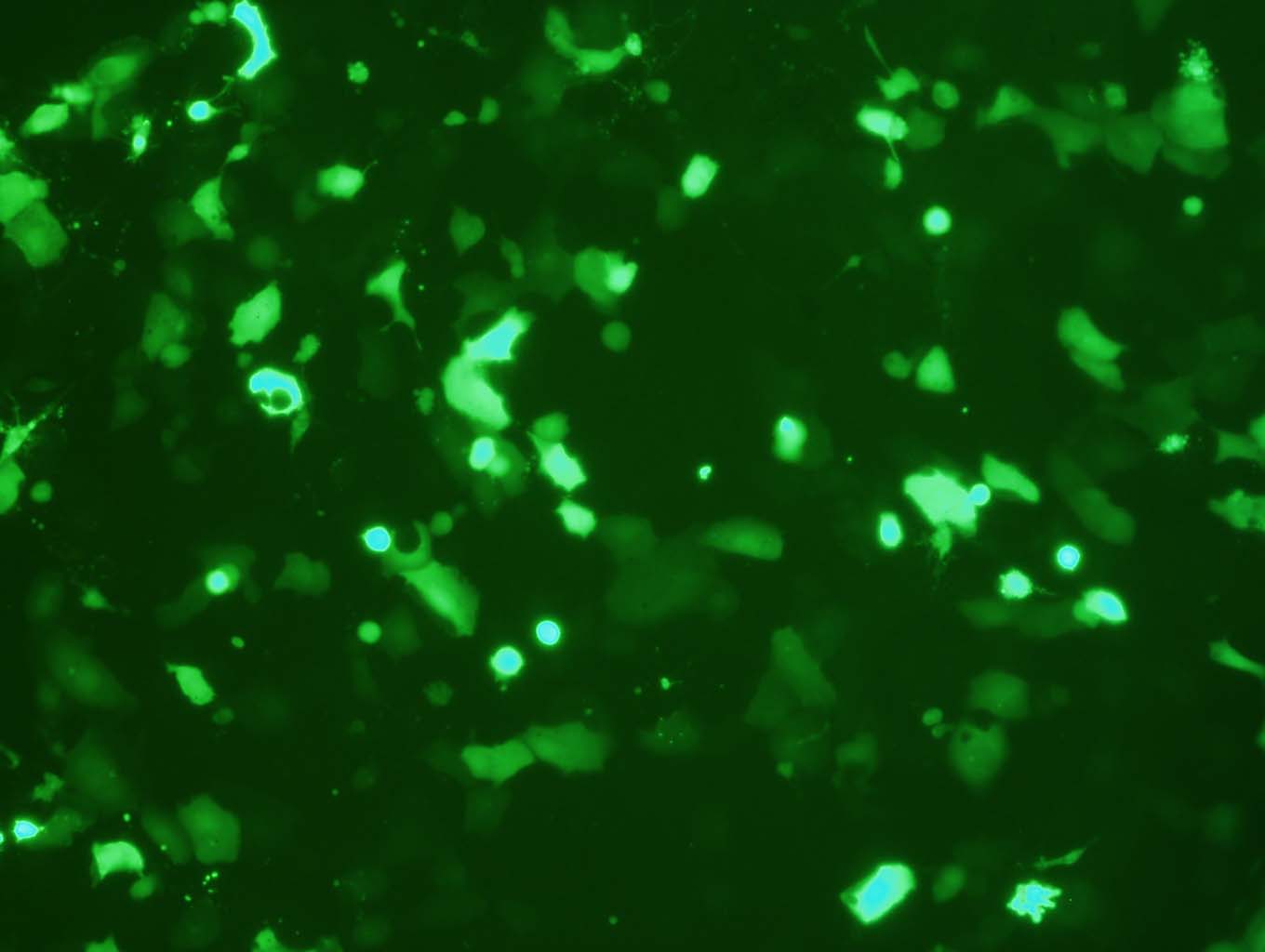Description
Cell to transfect:
Designations: 22Rv1
Cell Synonyms: CRL-2505, human prostate carcinoma cell
Organism: Homo sapiens (human)
Tissue: carcinoma; prostate
Morphology: epithelial
Growth properties: adherent
Tumorigenic: yes, forms tumors in nude mice
Antigen expression: prostate specific antigen (PSA)
DoublingTime: 40 hours
Receptors expressed: androgen
Depositors: J.W. Jacobberger
22Rv1 is a human prostate carcinoma epithelial cell line derived from a xenograft that was serially propagated in mice after castration-induced regression and relapse of the parental, androgen-dependent CWR22 xenograft. The cell line expresses prostate specific antigen. Growth is stimulated by epidermal growth factor (EGF) but is not inhibited by transforming growth factor beta-1 (TGF beta- 1).
Features of The Transfection Reagent:
- Broad spectrum for the transfection of large plasmid, mRNA, siRNA, and/or other type of nucleic acids, which is best for co-transfection of different type and/or size of nucleic acids.
- Unique formulation-maximize transfection performance in 22Rv1 cells.
- Lowest Cellular Toxicity-maintain cell density and reduce experimental biases
- 0.5 ml is able to transfect about 1000 wells of 24-well plate
- Deliver single or multiple plasmids
- Reproducible: due to highly controlled chemical synthesis of each of the ingredients, the reagent forms uniformly sized complex particles with nucleic acids. With optimized protocol, our reagent will ensure the reproducible highest transfection results.
- Economical: High efficiency means less amount of nucleic acid & reagent is needed
- Developed and manufactured by EZ Biosystems
Data
 FIG. 1. High throughput test of transfection efficiency (determined as RLU/mg) on PC-3 cells after transfection of luciferase reporter gene by using our 172 proprietary transfection formulas and several most popular commercial transfection reagents. The yellow box showed the results of 4 commercial transfection reagents. The red lines marked our candidate formulas with the highest transfection efficiency for PC-3 cells. This test result was confirmed with repeat experiments. The candidate formulas were also tested on 22Rv1 cells by tranfecting GFP expression plasmid, and got the same high transfection efficiency after flow cytometry analysis. The one that showed the optimal balance of potent & low cytotoxicity (percentage of 7AAD positive cells) among those candidate formulas was later named as 22Rv1 Cell Avalanche Transfection Reagent.
FIG. 1. High throughput test of transfection efficiency (determined as RLU/mg) on PC-3 cells after transfection of luciferase reporter gene by using our 172 proprietary transfection formulas and several most popular commercial transfection reagents. The yellow box showed the results of 4 commercial transfection reagents. The red lines marked our candidate formulas with the highest transfection efficiency for PC-3 cells. This test result was confirmed with repeat experiments. The candidate formulas were also tested on 22Rv1 cells by tranfecting GFP expression plasmid, and got the same high transfection efficiency after flow cytometry analysis. The one that showed the optimal balance of potent & low cytotoxicity (percentage of 7AAD positive cells) among those candidate formulas was later named as 22Rv1 Cell Avalanche Transfection Reagent.
FIG. 2. 22Rv1 cells were transfected with GFP vector (pEGFP-N3) by using 22Rv1 Cell Avalanche® Transfection Reagent. The cells were visualized by Nikon Eclipse Fluorescence microscope 24 hours post transfection.
For Other Cells
22Rv1 Cell Avalanche® Transfection Reagent (human prostate carcinoma cell) can also be used on the following cells with high transfection efficiencies.
DU 145 Cell
VCaP Cell
PC-3 Cell
Vero Cell
293 Cell
293T/17 Cell
Calu-3 Cell
Caki-1 Cell
MDCK Cell
Recommended protocols for these cells will be provided with the reagent. The protocols usually provide satisfactory transfection efficiency with invisible cytotoxicity. However, optimization may be needed for certain type of cells. Optimizations may include: the amount of DNA and this transfection reagent; cell density; transfection reagent/DNA ratio, or incubation time for the mixture of transfection reagent/DNA etc. For best transfection result, we recommend using the respective cell type/cell line specific Avalanche transfection reagents. Those reagents have been optimized on both recipes and protocols, and have been proved to have the best transfection results for the respective cell lines or primary cells. You can easily find the respective Avalanche transfection reagents specific for your cells by using the filters of our product list.
Additional Information
| Weight | 0.5 lbs |
|---|---|
| Adherence Phenotype |
Adherent |
| Cell Type |
Epithelial Cell |
| Disease |
Cancer |
| Names starting from |
0-9 |
| Primary/Cell Line |
Cell Line |
| Product Sizes |
0.5 ml, 1.5 ml |
| Species |
Human |
| Tissue Sources |
Prostate |
| Subcategories |
Cell Type/Cell Line Specific |
Documents
Protocols
MSDS
Citations or Feedback



